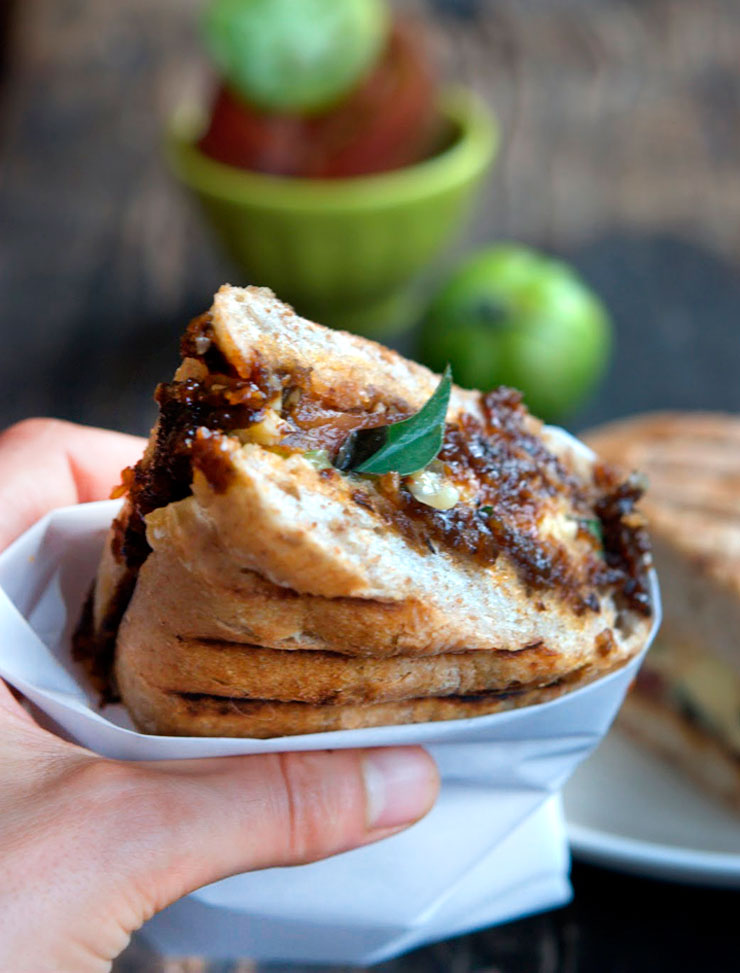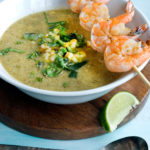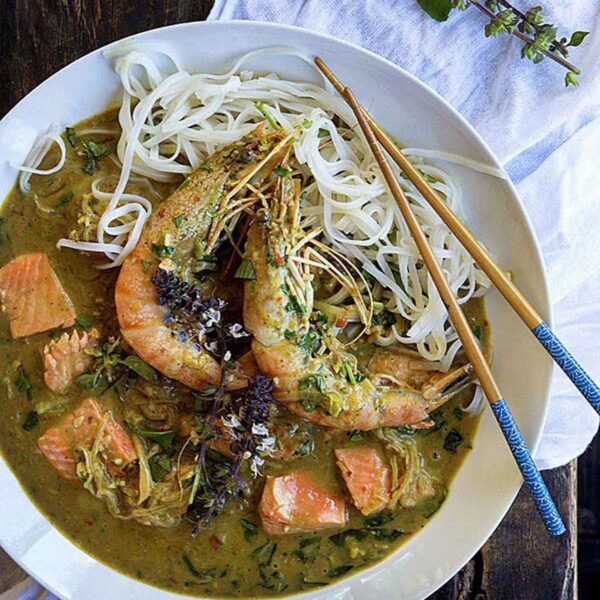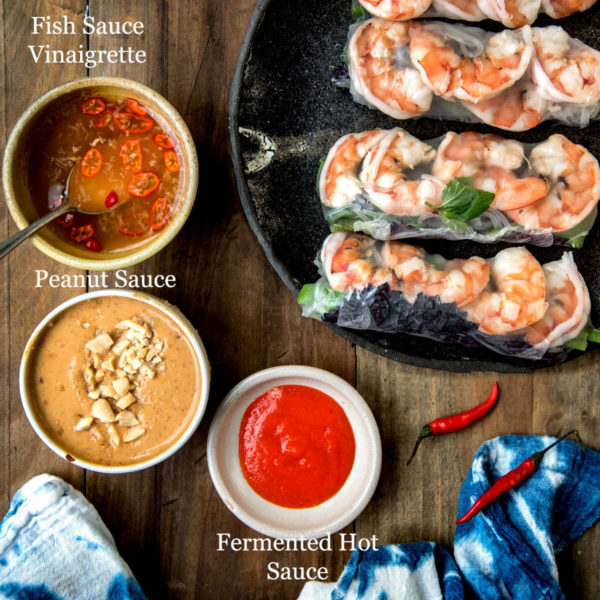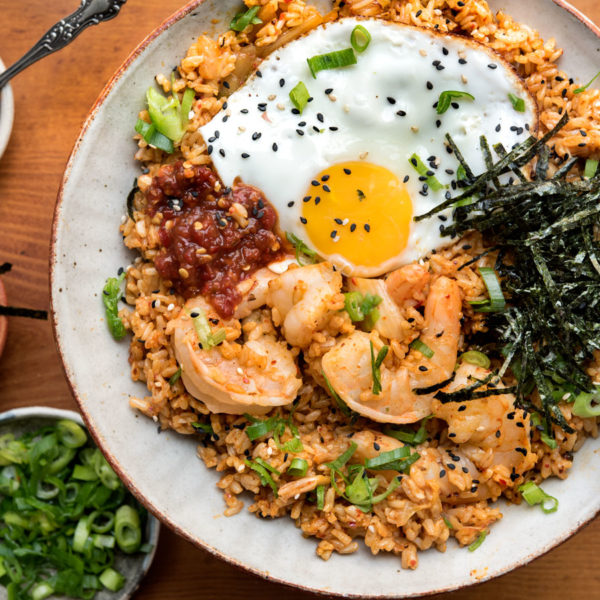Was in the mood for something a bit different. Nothing immediately came to mind, just something out of the ordinary; hmm…
Had David Thompson’s Thai Food cookbook sitting on my shelf for quite some time. A well thought-out cookbook, with lots of substance, including a great explanation of Thai culture/history, cooking techniques, ingredients, and hundreds of pages of recipes. That being said, I had yet, until today, to cook anything from it. Initially flipping through the pages, all 673 of them, I was daunted by the long lists of ingredients (although nothing a trip to Super H Mart could not remedy). And without having ever journeyed to Thailand and lacking any basis for judging how authentic Thai food should taste (with the exception of the local Thai place down the street), am at a bit of a disadvantage. Decided to give it a go nonetheless in an attempt to, hopefully, satisfy a craving for something different.
After perusing through this rather hefty tome, I decided to jump in and start with the recipe for Nahm Prik Pao or Thai Chilli Jam. Nahm Prik, with its mix of sweet (palm sugar), salty (combination of fish sauce, shrimp paste, and dried shrimp), sour (tamarind), and spicy (dried red chiles) flavors, sounded intriguing. I started with a small test batch that disappeared rather quickly. Wow, this stuff is really tasty and quite versatile. A few days later, I whipped up an even bigger batch.
What can you do with Nam Prik Pao? Keep reading to find out…
First, you’ll need to track down a few essentials [from top clockwise]: shallots, garlic, fish sauce, shrimp paste, galangal, dried shrimp, tamarind pulp (sitting next to the tamarind pods), dried chiles, palm sugar.
The Shopping List
Fish Sauce — fish (typically anchovies or other small fish) and salt that has been allowed to ferment for 12 to 18 months. The basic ingredients of a good fish sauce are: fish, water, and salt. Sugar may also be added, but isn’t necessary. Look for brands free of other added flavorings or colorings, such as caramel, HFCS, or monosodium glutamate.
Galangal — a rhizome and close relative to ginger root; in the raw it has a stronger, more peppery flavor than ginger.
Palm sugar — concentrated from the sap of the palmyra and sugar palm trees. You can find at Asian markets; it usually comes in several small discs or one large block. To use, pound in a mortar and pestle or microwave for 30 seconds before using. Store in an airtight container.
Dried Prawns/Shrimp — look for ones with a deep red color and sweet smell (store in the refrigerator).
Shrimp paste — made from shrimp that have been salted, fermented, and then dried in the sun for up to a year. Toast before using by wrapping in foil and dry-toasting in a skillet, 2 to 3 minutes until fragrant.
Tamarind pulp — used as a souring agent; look for shelled, deseeded tamarind pulp; dilute with water.
This may seem like a lengthy list of ingredients, but all are quite shelf-stable and/or will last for quite some time in the refrigerator (leftover galangal freezes well).
Nahm Prik Pao is somewhat labor intensive to make, but well worth the effort. Make a big batch such that you can enjoy an endless array of dishes, many of which take only a matter of minutes to prepare once you have a sufficient supply of Nahm Prik Pao on hand (plus, Nahm Prik Pao lasts for quite a while in the fridge).
Heat up a wok (smoking hot), add some oil, add some squid (tentacles and bodies), stir about 2 minutes, then add in some Nahm Prik Pao (about 2 tablespoons per pound of squid, or more to taste), and a large handful of [Thai] basil leaves.
Or, if you want to create a bit of a soup, combine 1 cup of chicken or vegetable stock/broth and 5 to 6 tablespoons — more or less depending on desired level of heat — of Nahm Prik Pao. Feel free to substitute shrimp, clams, mussels, fish, etc. (or a combination thereof), in lieu of squid. If using clams and/or mussels, steam them in the broth until they open. Finish with a large handful of basil leaves and serve with a side of (brown) rice.
If you want to get a little fancy, you can score the squid. First, cut the squid open and pat the inside and outside dry (helps to get a good sear on the squid; otherwise it will just boil in its juices). Place the squid so the inside is facing up (otherwise they won’t curl up). Score the squid on a diagonal in both directions, being careful not to cut all the way through its flesh. Then, cut into approximately 1-inch strips.
Or, skip the scoring, and simply slice the squid into 1-inch thick rings.
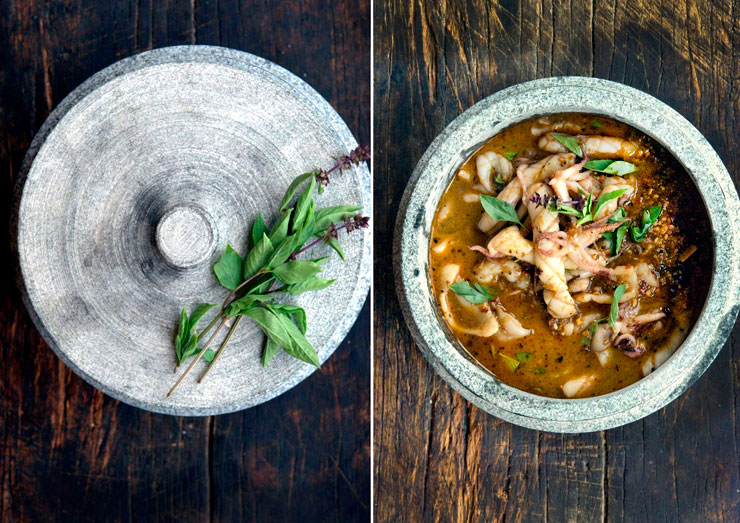
Thai Chilli Jam — Nam Prik Pao
Adapted slightly from Thai Food by David Thompson
Makes about 2 to 2 1/2 cups; can easily double
Oil for deep-frying
2 cups (~9 ounces) shallots, sliced lengthwise
1 cup garlic (~2 heads), sliced lengthwise
1/4 cup dried shrimp, rinsed and dried
1/2 cup dried long red chiles, deseeded (*seeds reserved)
5 slices galangal (or ginger, if you can’t track down galangal)
1/2 teaspoon shrimp paste (gapi), roasted
1/2 cup palm sugar (or brown sugar)
1/4 cup thick tamarind water
1/4 cup fish sauce
*Note: for added heat, you can include chile seeds to taste (~1/4 to 1/2 of the reserved seeds for medium heat).
Heat oil in a wok and separately deep-fry the shallots, garlic, prawns, chiles (and some seeds), and galangal until golden. Blend in a food processor, along with the shrimp paste, moistened with some of the oil used for frying to facilitate blending.
In a pan, bring the mixture to a boil and add the palm sugar, tamarind water, and fish sauce. Simmer until thick, stirring regularly.
Food for thought: How about a deluxe grilled cheese panini with [smoked] cheddar, thick tomato slices, Thai basil, and, last but certainly not least, a layer of Nahm Prik Pao. Toast the panini until the cheese is hot and gooey and the bread crisp.
